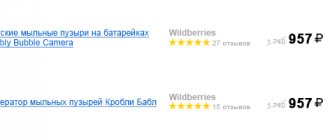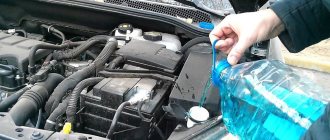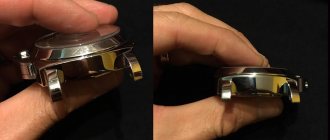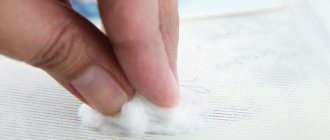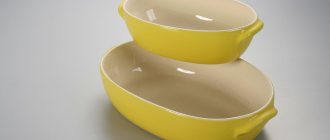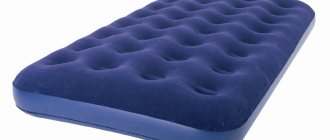Types of adhesive compositions used and factors affecting their density
The glass cleaning method should be selected taking into account the adhesive used when gluing the film. The most common options are the following names:
- PS (Pressure Sensitive) is an adhesive that forms a bond when parts are pressed against each other. A striking example of the use of this adhesive composition is adhesive tape. The adhesive layer is an elastomer with the addition of tack-increasing compounds (ether, rosin). The easiest to remove films are those with an adhesive acrylic layer. Before the composition completely hardens in air, which occurs after removing the film, it can be washed off within a few minutes with plain water.
- DPS (Detackifier Pressure Sensitive). Films with this abbreviation are equipped with a layer of water-soluble glue. One of the varieties of the group are stickers marked PS/DT. To attach to the surface, they also need to be moistened and pressed against the glass, having previously removed all excess liquid from the surface.
- CD. Temperature-activated adhesive composition.
- CDF. The abbreviation corresponds to a group of two-component adhesives. Such films require additional installation solution.
It is especially difficult to remove tinting and glue after it from the rear window
The brand of adhesive on films cannot always tell you how to remove the sticky layer from glass. To increase the strength of the connection, manufacturers add additional components to the basic compositions, so the search for a way to clean car glass is often carried out experimentally.
How to clean the rear window of a car from glue
It is impossible to clean the heated rear window of a car using a scraper or blade. The heating filaments can be damaged, so it is better to use other methods.
When removing film from the rear window, proceed in the following order:
- Remove all seals from the window. This will provide free access to the edges of the tint film.
- Wet the glass with the prepared solution, paying special attention to the top part of the tint. The solution should penetrate under it.
- Separate the coating from the glass and carefully pull it down with both hands. Wipe off any remaining glue immediately.
Self-removal of coating
Before you start removing the tint, you need to know how to remove it so that as few sticky spots as possible remain on the surface. There is a special way by which you can remove the film as cleanly as possible. Its surface is heated to 50° with a hair dryer and slowly pulled together.
You can remove tint yourself in the following ways:
- with a quick jerk, during which the entire film is removed;
- heating with slow peeling;
- gradual removal of the coating.
If independent intervention does not give the desired result, you should use another glass cleaning product or contact a professional.
Mechanical methods for removing tinting glue from glass
Removing the adhesive from the rear window is much more difficult than removing the tinting adhesive from the glass on the side doors. It is important to always remember the existence of heating filaments. Do not rub the surface with sharp or hard objects; it is better to use a soft cloth or napkin.
The rear window should not be treated with cleaners or other aggressive chemicals. Scratches and abrasions that will certainly appear after using such compounds will spoil the aesthetically attractive appearance of the car.
The choice of method for cleaning a car from adhesive after removing tint depends on the area of contamination, the type of adhesive and other factors. Through trial and error, you can find a product that will help erase traces of the removal of the tint material. To avoid damage to interior and body elements, it is important to remember the features of cleaning the rear window and other nuances.
The problem associated with removing the remaining sticky layer from tinting can be prevented at the stage of dismantling the film. When the coating is removed correctly, no more than 10–20% of the composition remains on the surface, which is subsequently quickly and easily removed. The main techniques that allow you to perform the operation as accurately and efficiently as possible are:
- Method using industrial hair dryers. It is rational to use for films with an adhesive layer such as CD. Removal of the coating is carried out by heating to 40–60°C and removing areas of tinting. You can also do the work using a household hair dryer, but you should remember that this device is not intended for long-term continuous operation. The disadvantages of this method include the negative impact of elevated temperatures on parts associated with glass - seals and decorative overlays. These elements can be deformed under the influence of spot heating. To protect structural elements, they are covered with a damp rag or completely removed.
- Method using soap solution and scrapers. To work, you will need a thin knife, a spatula or similar means, and a spray bottle with a mixture of detergent and water. Having lifted the edge of the film, the master constantly wets the tear line and detaches the canvas in small sections.
Even after the most careful removal of the film, glue stains and entire areas of adhesive coating may remain.
Remnants of the adhesive layer that still remain on the glass can be removed mechanically using:
- Mild steel scrapers, blade. The edge should be at an angle of 30–40 degrees to the surface. It is necessary to clean off the layer without pressure, with smooth movements. The adhesive is easiest to clean immediately after heating and detaching the film, so it is advisable to carry out the cleaning operation immediately after removing the tint.
Depending on the method of removal, the adhesive composition can be removed in layers, or it can crumble into solid crumbs - Soft abrasives. The contaminated area is treated with a concentrated soap solution, for example, household detergent. After it has dried, the composition is applied again and cleaned off with the rough side of a kitchen sponge.
Methods for removing adhesive
You can wipe off the adhesive residue in different ways. However, not all of them are safe. The most popular methods for cleaning car glass from glue after removing tinting are:
- Cutting is done using sharp tools. Before work, moisten the glass with soapy water. This method is the most effective, but requires a lot of time and patience, especially if the glass is heated. After cleaning, the surfaces must be wiped with alcohol or another degreaser.
- Wipe the glass with a cloth previously soaked in any solvent. After a few minutes, the glue is cleaned off with a squeegee. When using this method, you must adhere to fire safety rules, and then you need to get rid of the smell in the car interior.
- To clean the glass from glue after tinting, use special liquids in the form of a spray. The substance is applied to the surface and wait for the time indicated on the package. To remove glue from glass tint, use a special spatula, which is sold with the bottle. The disadvantages of such products include high price and toxicity.
- You can remove glue from glass after tinting using a thick soap solution and a sponge. Any dishwashing detergent available in the house is diluted in water until a rich foam forms. Apply the solution to the contaminated surface with a sponge. It is allowed to dry and then applied again. Dried glue can be easily cleaned off with a soft abrasive - the other side of the sponge. The cleaned surface must be wiped dry.
- They use a special rust converter, Star Wax - spray it onto the surface, wait about 10 minutes and wipe it with a rag.
- Profoam 2000, WD-40 or anti-rain cleaner is applied to the glass and then removed with a rag or squeegee, which can be replaced with a plastic card.
- Supermoment Antiglue removes glue from any vertical surfaces.
- Cytosol removes the adhesive layer from bitumen or polymer components.
- Coca-Cola Lemonade copes with many types of glue no worse than expensive special products.
Safety precautions
Most glass cleaning compounds are flammable, have a strong, pungent odor, some are quite toxic and can even cause poisoning and damage to the nervous system if their fumes are inhaled. If they come into contact with the skin, they can cause a burn and penetrate the bloodstream. Therefore, when working with solutions, you must observe safety precautions:
- Do not clean glass near an open fire, any heat sources, including hot objects; with an increased concentration of fumes in the air, a fire can break out even from a spark;
- work in protective clothing and rubber gloves to prevent products from getting on your skin;
- To protect against harmful fumes, wear a respirator and goggles.
Removing tint can be quite a labor-intensive process, especially if there is a lot of adhesive residue left on the glass. But if you purchase one of the described products, you can still give your car its original appearance, and without serious costs.
Special means
Special cleaners are available to remove glue. They have dissolving ability, are easy to apply, and do not emit a pungent odor.
List of popular glue cleaners:
- "Super Moment Anticley";
- KERRY tint remover spray;
- Koch Chemie Eulex professional cleaner;
- KUDO spray;
- glue cleaners ZM 08984, 3M 08184.
The latest products, from , have the largest number of positive reviews, smell pleasantly of citrus and quickly remove the adhesive on glass. The only negative is the high price (from 1000 rubles). Other cleaners will cost 150–500 rubles.
How to scrub with chemicals
Solvents will help speed up and make the process of removing the sticky layer from glass more efficient. Most often, car enthusiasts use white alcohol, gasoline, kerosene, acetone-containing compounds, liquids for flushing carburetors, etc. To remove contamination, the area is moistened with the solution, left for a short time and the base layer is wiped off with a soft scraper. Afterwards, finishing is carried out and the surface is wiped dry.
Before treating glass with such liquids, it is necessary to carefully protect all adjacent surfaces, otherwise financial losses will be higher than if the tinting was removed by professionals
The main advantage of the method is its low cost and versatility. The above-mentioned products are inexpensive and can be purchased at any hardware store. The disadvantages of this method are:
- Risk of damage to seals and interior surfaces of the passenger compartment. Rubber or plastic is destroyed when in contact with solvent. Accidental contact with the solution will lead to stains on the upholstery or linings.
- High toxicity of the products. To avoid cases of poisoning, do not inhale solvent vapors for a long time. Considering that the treatment is carried out inside the cabin, the car owner needs to provide an effective method of ventilation or refuse to use the method if it is necessary to treat large areas.
Using a hair dryer by professionals is considered the best method. Without the use of chemicals, it will be possible to remove not only the film, but also glue residues. To do this, the glass is heated and unsightly marks are wiped off with special napkins. Some people use a steam generator: they heat the glass with steam, removing glue stains.
Alfa Romeo 156 ❶.❽TS ⋆MauraGreen⋆ › Logbook › Removing tint, removing glue residue
History...The previous owner had the Alpha tinted all around. When it was time to register and undergo maintenance, they announced: either remove it now or pay a fine. Without hesitation, I tinted the front windows on the spot using improvised means (a stationery knife). PS
To be honest, it became more convenient for me, otherwise I constantly had to lower the windows to look in the side mirrors
Result: glue residue all over the glass.
Last night, I decided to remove the remaining glue.
What you will need:
Hands - 2 pcs White spirit (solvent) - 1 pc (about 50 rubles) Dish sponges with a hard side Armed and go!
2 hours of successful work. (2 sponges + half a can of liquid)
From July 1, 2012, for the operation of cars with tinted windows that do not comply with established standards, in addition to a fine of 500 rubles, license plates will be removed. This provision is contained in amendments to the Code of Administrative Offenses (CAO), toughening penalties for traffic violations, which were signed by Russian President Dmitry Medvedev on April 22. The provision on the removal of license plates for illegal tinting has been added to paragraph 1 of part 3 of article 12.5 of the Code of Administrative Offenses, which previously provided for only a fine for such a violation. In this case, the amendments allow the vehicle to be driven to the place where the tinting is removed (for example, to a car service), however, the violation must be eliminated no later than 24 hours from the moment the license plates are removed. After the car owner gets rid of the tint film, the license plates will be returned. At the moment, according to GOST requirements, the light transmission of the windshield must be at least 75 percent, and the front side windows must be at least 70 percent. Amendments to the Code of Administrative Offenses also provide for the removal of license plates in case of operation of a vehicle with a high noise level or that does not comply with environmental standards, as well as for vehicles with a faulty brake or steering system that have not passed state technical inspection, and which have illegally installed sound or light signals. A similar penalty is provided for cars without compulsory motor liability insurance.
Pros (pros):
1. The car interior does not fade in the sun + the interior heats up less; 2. Don't worry about forgotten things in the car. From the outside, due to the tinting, it is not visible what is in the cabin; 3. The sun is not so blinding; 4. No one stares at you in traffic; 5. Asshole auto fixers don’t see who’s in the car and don’t take risks (the 90s are over, but still); 6. Cars behind do not glare into the mirrors with their headlights; 7. In case of an accident, the glass does not crumble, and all the fragments remain on the film, unless, of course, the tinting was done with film; 8. You can make love in the car even during the day)))
Cons (cons):
1. It is inconvenient to park in yards at night, because... I can not see anything. I remember I had to roll down the windows in a snowstorm to back up in a dark yard... Craftsmen build xenon into a reversing headlight, but I haven’t seen this with my own eyes. Therefore, I can’t say anything; 2. At night in the city, the tint turns into a mirror. Several times I stood in traffic and stared at my reflection; 3. If you like to bomb, then you have to be careful. They will put the barrel to their temple and no one will see it; 4. Traffic police officers fine you for tinting (((
How to remove tint yourself.
First, it is advisable to warm up the glass from which you plan to remove the film. In this case, the glue will become softer, and the tint will be much easier to separate from the glass. You can use a regular hairdryer to warm it up. Without bringing it too close to the surface, to avoid overheating, heat the glass evenly before removing the tint yourself. Do not allow plastic trim parts to become hot.
Then you should lower the glass to about halfway if we are talking about the side windows of the car. This will make it much easier to separate the top edge of the film from the glass surface. It is better to separate the edge of the tint with a sharp knife.
Next, there are two ways to remove car window tinting. The first involves removing the tint film in one sharp movement. To do this, you need to grab the top edge of the film with both hands and forcefully pull it down. Following the second method, the tint is removed gradually. With one hand you need to slowly pull the film towards you, and with the other, carefully separate the glue from the glass using a sharp thin knife or blade.
But in both the first and second cases, traces of glue will most likely remain on the glass. So before you remove the tint yourself, prepare everything you need to then completely clean the glass from traces of glue. A sharp stationery knife can help you with this; you can use it to scrape off any remaining glue from the glass. But the knife may leave scratches on the glass, so it is better to use special solvents designed for cleaning glass after tinting. They can be purchased at any auto store. Undiluted medical alcohol is suitable for the same purposes.
If there is little glue left on the glass, it can be removed using ordinary dishwashing detergent (I tried it, but it didn’t work for me)))), diluted in warm water. It is necessary to moisten the glass with this solution and wipe thoroughly with a soft cloth.
By removing the tint yourself, you will save about 1,000 rubles. This is exactly how much this service costs in auto repair shops. But in order to tint the heated rear window, it is better to contact specialists. Even if you know how to remove the tint yourself, you can damage the heating filaments of the glass and, accordingly, damage it.
Determine What's Harmful to Window Tinting
Knowing which products are harmful to tinting will help you avoid accidental damage or shortening the life of your windows. Tinting is almost always applied to the inside of the window. Therefore, try to clean these areas as gently as possible. Ammonia-based products can reduce the intensity of the shade or cause the material to dry out, causing it to lose its strength and smoothness. Also, do not use any abrasive materials, including paper towels, newspaper, or hard sponges.
general information
Every experienced motorist knows that removing window tint on your own is not so easy. It is necessary to show considerable restraint and spend a lot of time to complete this procedure. But if you know a number of subtleties, you can cope with this task much faster. The most common situation is when the old film begins to peel off from the surface of the glass along the perimeter. Naturally, not every owner will accept this and want to remove the film.
In principle, if this process began naturally, in other words, without the influence of external factors, then there should be no difficulties with removal. However, this is not always the case. Owners who try to remove the tint on their own often encounter a problem - the film does not come off completely, but in pieces, and as you get closer to its center, it becomes more and more difficult to remove the tint from the glass.
If the film does not adhere too tightly to the surface, it can be removed by gradually peeling off the edges using your fingers. It is enough to make a sharp downward movement, and very soon the glass is completely cleared of film. Many car owners even demonstrate this trick in videos, which they then post on the Internet.
Characteristics of tint film
The tinting material is made from a thin layer of polyester. There are several such layers on the film. And its ability to transmit light depends on their number.
When installing the material, the film is glued to the glass using the adhesive composition on it. The gluing process is quite simple:
- the surface is degreased;
- then a soap solution is applied and a film cut to size is glued on.
The glue hardens on the glass and the film adheres to the surface.


